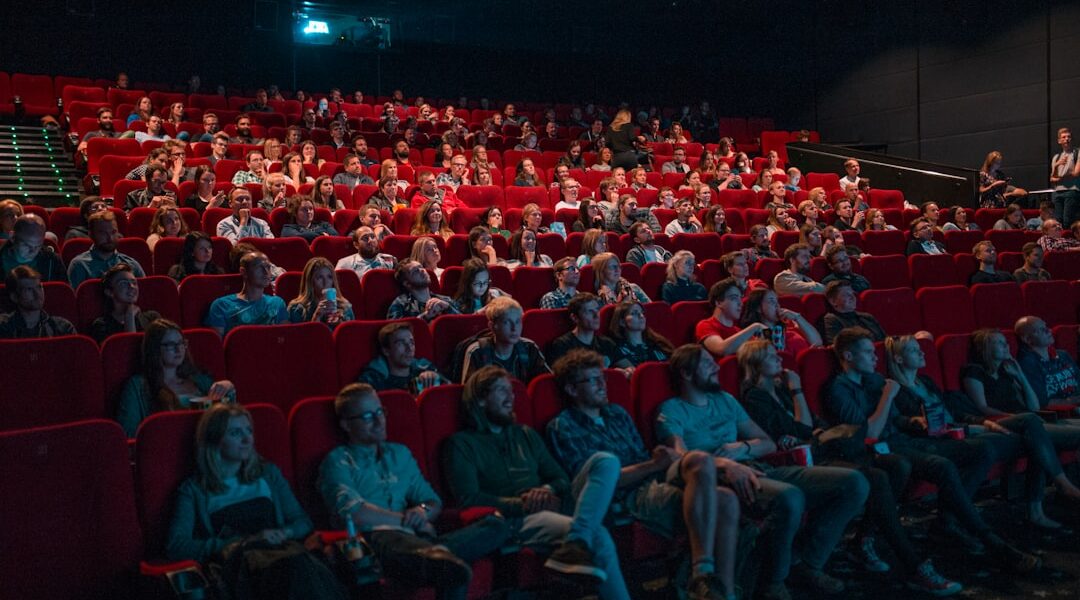Blockbuster movies have evolved significantly since their emergence in the early 20th century. The term “blockbuster” originally described a powerful bomb, but it later came to denote highly successful and popular films. “Jaws,” directed by Steven Spielberg and released in 1975, is often considered the first true blockbuster, setting new standards for production values, thrilling action, and box office success.
Technological advancements have allowed for increasingly spectacular special effects and more ambitious storytelling in blockbuster films. The rise of superhero movies and big-budget franchises like “Star Wars” and “Harry Potter” has solidified blockbusters as a cornerstone of modern cinema. The definition of a blockbuster has expanded to include various genres beyond action and adventure.
Animated films such as “The Lion King” and “Frozen” have achieved massive success, appealing to diverse age groups. Science fiction and fantasy movies like “Avatar” and “The Lord of the Rings” have also captivated audiences with their immersive worlds and epic narratives. Recent years have seen an increase in diversity and representation in blockbuster films.
Movies like “Black Panther” and “Crazy Rich Asians” have broken box office records while challenging traditional notions of what constitutes a blockbuster. This evolution reflects changing audience preferences and a growing demand for more inclusive storytelling in mainstream cinema.
Key Takeaways
- Blockbuster movies have evolved from simple entertainment to cultural phenomena, shaping the way we consume media.
- The impact of blockbuster movies on pop culture is undeniable, influencing fashion, music, and even language.
- Blockbuster movies play a crucial role in the entertainment industry, driving box office sales and shaping industry trends.
- Advancements in technology have revolutionized the way blockbuster movies are made, from CGI to 3D and IMAX experiences.
- Blockbuster movies have raised audience expectations for high-quality visuals, immersive storytelling, and larger-than-life experiences.
The Impact of Blockbuster Movies on Pop Culture
Blockbuster movies have had a profound impact on pop culture, shaping the way we consume entertainment and influencing our collective imagination. These films often become cultural phenomena, with iconic characters, memorable quotes, and unforgettable moments that permeate society. From the lightsabers of “Star Wars” to the catchphrases of “The Terminator,” blockbuster movies have left an indelible mark on popular culture.
They have also inspired a wide range of merchandise, from action figures and clothing to video games and theme park attractions. The influence of blockbuster movies can be seen in everything from Halloween costumes to internet memes, demonstrating their enduring impact on society. In addition to their influence on consumer products, blockbuster movies have also shaped the way we engage with storytelling.
These films often set the bar for visual effects and production design, pushing the boundaries of what is possible on screen. They have also influenced the way stories are told, with many filmmakers drawing inspiration from the narrative structures and character arcs found in blockbuster movies. The impact of these films on pop culture can also be seen in the way they spark conversations and debates, with fans eagerly dissecting plot twists and speculating about future installments.
Blockbuster movies have become a shared cultural experience, bringing people together to celebrate their favorite stories and characters.
The Role of Blockbuster Movies in the Entertainment Industry

Blockbuster movies play a crucial role in the entertainment industry, driving box office revenue and attracting audiences to theaters around the world. These films are often the centerpiece of major studio releases, with extensive marketing campaigns and wide theatrical releases designed to maximize their impact. The success of blockbuster movies can have a ripple effect on the industry as a whole, influencing everything from production budgets to distribution strategies.
In many cases, the financial success of a blockbuster movie can determine the future of a studio or franchise, making them a high-stakes endeavor for all involved. Beyond their financial impact, blockbuster movies also serve as a barometer for cultural trends and audience preferences. These films often reflect the values and concerns of society at large, addressing issues such as identity, politics, and technology.
They also provide a platform for diverse voices and perspectives, showcasing stories that resonate with audiences from different backgrounds. In this way, blockbuster movies have the power to shape public discourse and influence social attitudes, making them an important force in the entertainment industry.
The Technology Behind Blockbuster Movies
| Movie | Technology Used | Box Office Revenue |
|---|---|---|
| Avatar | 3D technology, motion capture | 2.79 billion |
| Avengers: Endgame | CGI, motion capture, 3D technology | 2.798 billion |
| Jurassic Park | CGI, animatronics | 1.029 billion |
| Star Wars: The Force Awakens | CGI, practical effects | 2.068 billion |
The technology behind blockbuster movies has evolved significantly over the years, allowing filmmakers to create increasingly immersive and visually stunning experiences for audiences. Advances in computer-generated imagery (CGI) have revolutionized the way special effects are used in films, enabling filmmakers to bring fantastical worlds and creatures to life on screen. This technology has been instrumental in the success of blockbuster movies like “Jurassic Park,” “Avatar,” and “The Avengers,” which rely heavily on CGI to create their larger-than-life visuals.
In addition to CGI, advancements in sound design and cinematography have also played a crucial role in the creation of blockbuster movies. High-quality sound systems and state-of-the-art cameras have allowed filmmakers to capture more dynamic and realistic audiovisual experiences, enhancing the impact of their storytelling. The use of 3D technology has further expanded the possibilities for immersive viewing experiences, allowing audiences to feel like they are part of the action on screen.
As technology continues to evolve, so too will the capabilities of blockbuster movies, pushing the boundaries of what is possible in cinematic storytelling.
The Influence of Blockbuster Movies on Audience Expectations
Blockbuster movies have had a significant influence on audience expectations, shaping the way we perceive entertainment and consume media. These films often set a high standard for production values and spectacle, leading audiences to expect increasingly grandiose visuals and thrilling action sequences. As a result, filmmakers are under pressure to deliver bigger and more ambitious projects in order to meet these heightened expectations.
This has led to an arms race of sorts in the film industry, with studios competing to outdo each other with ever more extravagant blockbusters. In addition to raising the bar for visual effects and production quality, blockbuster movies have also influenced audience preferences when it comes to storytelling and character development. These films often prioritize fast-paced action and high-stakes drama, leading audiences to expect constant excitement and spectacle from their entertainment.
This has led to a shift in the types of stories that are told in mainstream cinema, with an emphasis on high-concept premises and larger-than-life conflicts. While this trend has its benefits, it has also led to concerns about the homogenization of popular culture, as filmmakers feel pressured to conform to certain tropes and conventions in order to satisfy audience expectations.
The Global Reach of Blockbuster Movies

Reaching a Worldwide Audience
One of the defining characteristics of blockbuster movies is their global appeal, with these films attracting audiences from all corners of the world. This widespread popularity has been facilitated by advancements in distribution and marketing, allowing blockbuster movies to reach international markets with ease.
A Unifying Force in Global Popular Culture
As a result, these films have become a unifying force in global popular culture, transcending language barriers and cultural differences to captivate audiences everywhere.
The Impact on the Film Industry
The global reach of blockbuster movies has also had a significant impact on the film industry as a whole, leading to an increase in international co-productions and collaborations. Filmmakers are increasingly looking beyond their domestic markets in search of new audiences, leading to a greater diversity of stories and perspectives on screen.
Fostering Cultural Exchange and Understanding
This has not only enriched the cinematic landscape but has also fostered greater cultural exchange and understanding between different countries and communities.
The Future of Blockbuster Movies in the Digital Age
As we enter the digital age, the future of blockbuster movies is being shaped by new technologies and changing consumer habits. Streaming services like Netflix and Disney+ have disrupted traditional distribution models, offering audiences access to a wide range of content from the comfort of their own homes. This shift has raised questions about the future of theatrical releases and the role of cinemas in an increasingly digital world.
Despite these challenges, blockbuster movies continue to thrive, with filmmakers finding innovative ways to adapt to changing audience preferences and technological advancements. Virtual reality (VR) experiences and interactive storytelling are just some of the ways in which filmmakers are exploring new avenues for immersive entertainment. Additionally, advancements in artificial intelligence (AI) and machine learning are opening up new possibilities for creating realistic visual effects and lifelike characters.
In conclusion, blockbuster movies have played a pivotal role in shaping modern entertainment culture, influencing everything from technological advancements to audience expectations. As we look towards the future, it is clear that these films will continue to evolve and adapt to new challenges, remaining a cornerstone of popular culture for years to come.
If you’re a fan of blockbuster movies, you’ll love the latest article on puppymovie.com that discusses the top 10 highest-grossing films of all time. This article delves into the success of these blockbuster hits and what makes them so appealing to audiences worldwide. Whether you’re a movie buff or just enjoy a good action-packed film, this article is a must-read for anyone interested in the world of blockbuster movies.
FAQs
What are blockbuster movies?
Blockbuster movies are highly popular and successful films that attract large audiences and generate significant revenue at the box office. These movies often have big budgets, extensive marketing campaigns, and widespread distribution.
What are some characteristics of blockbuster movies?
Blockbuster movies typically feature high production values, including impressive special effects, star-studded casts, and compelling storytelling. They often belong to popular genres such as action, adventure, science fiction, and fantasy.
What are some examples of blockbuster movies?
Some examples of blockbuster movies include “Avatar,” “Titanic,” “The Avengers,” “Jurassic Park,” “Star Wars,” “The Dark Knight,” and “The Lion King.” These films have achieved massive commercial success and have become cultural phenomena.
How do blockbuster movies impact the film industry?
Blockbuster movies have a significant impact on the film industry by driving box office revenue, influencing popular culture, and shaping audience expectations. They also have the potential to launch successful franchises and spin-offs.
What are some challenges faced by blockbuster movies?
Despite their potential for success, blockbuster movies also face challenges such as high production costs, intense competition, and the need to meet audience expectations. Additionally, they may be subject to critical scrutiny and the risk of underperforming at the box office.




